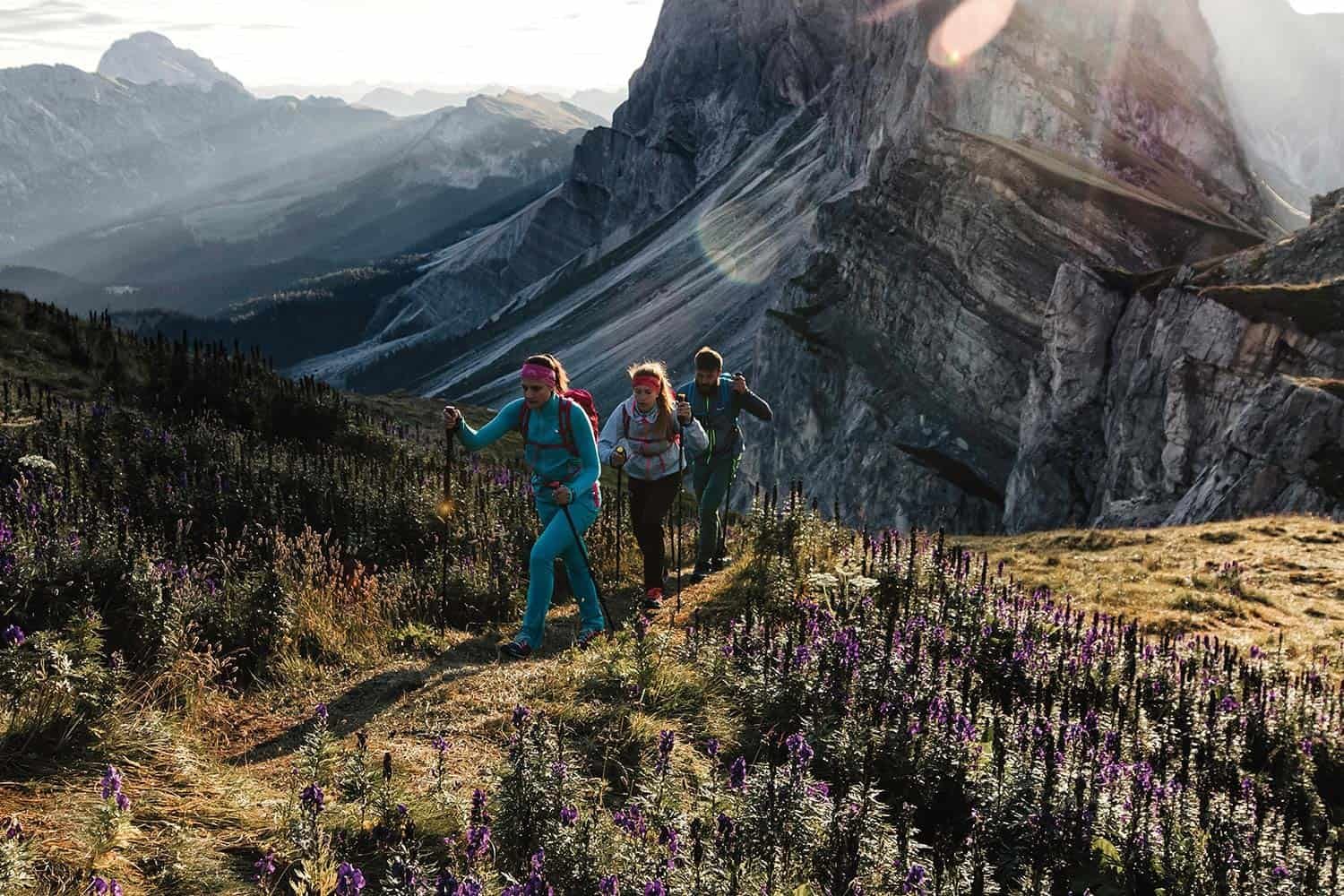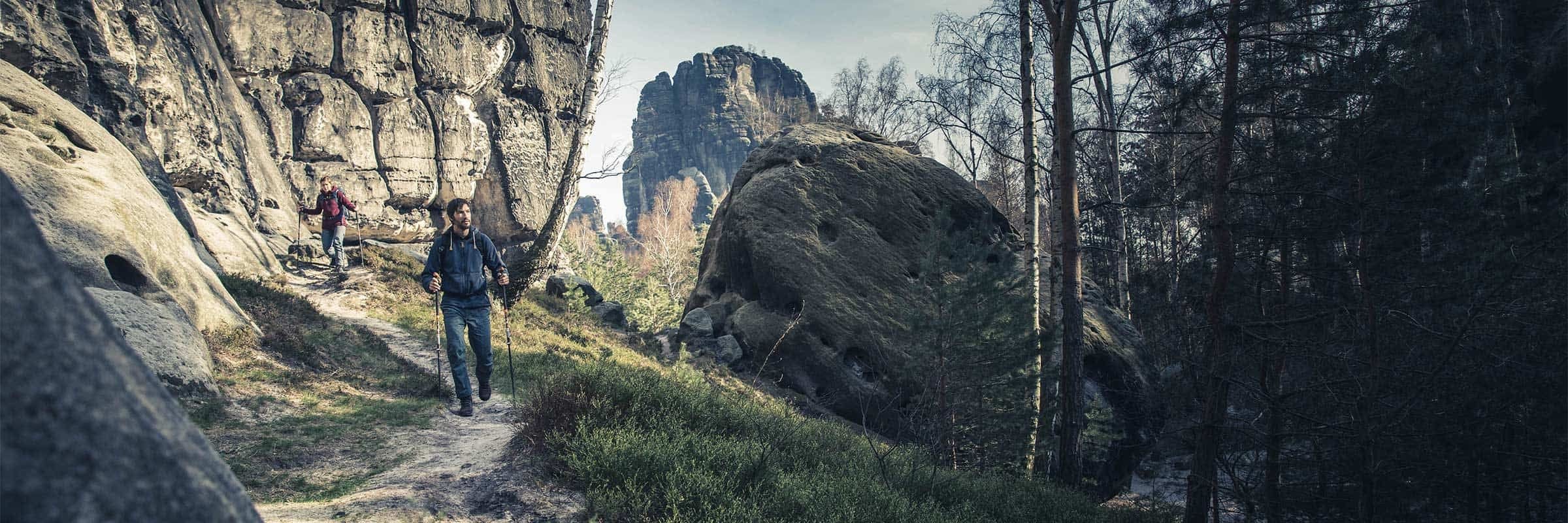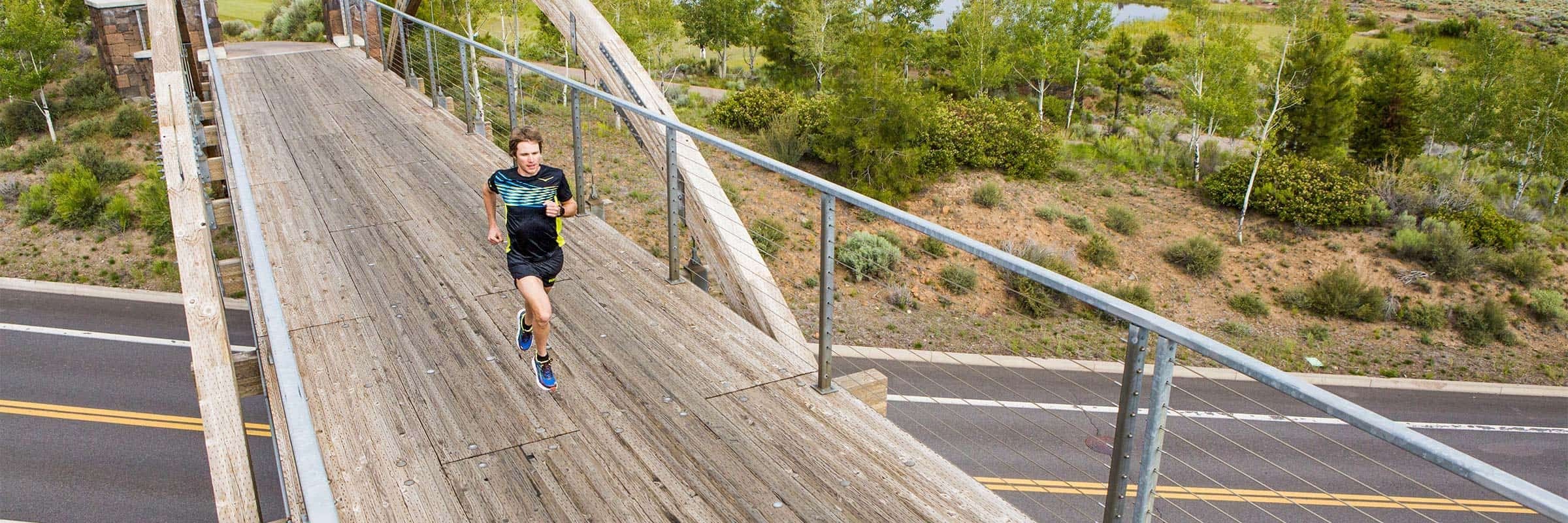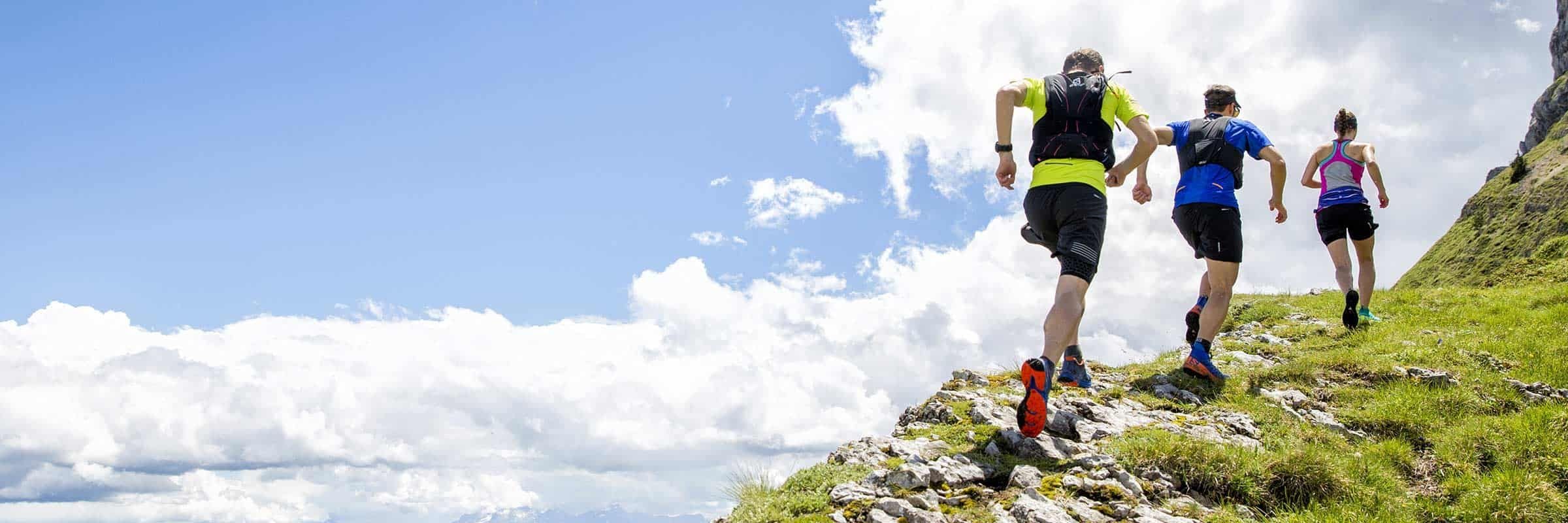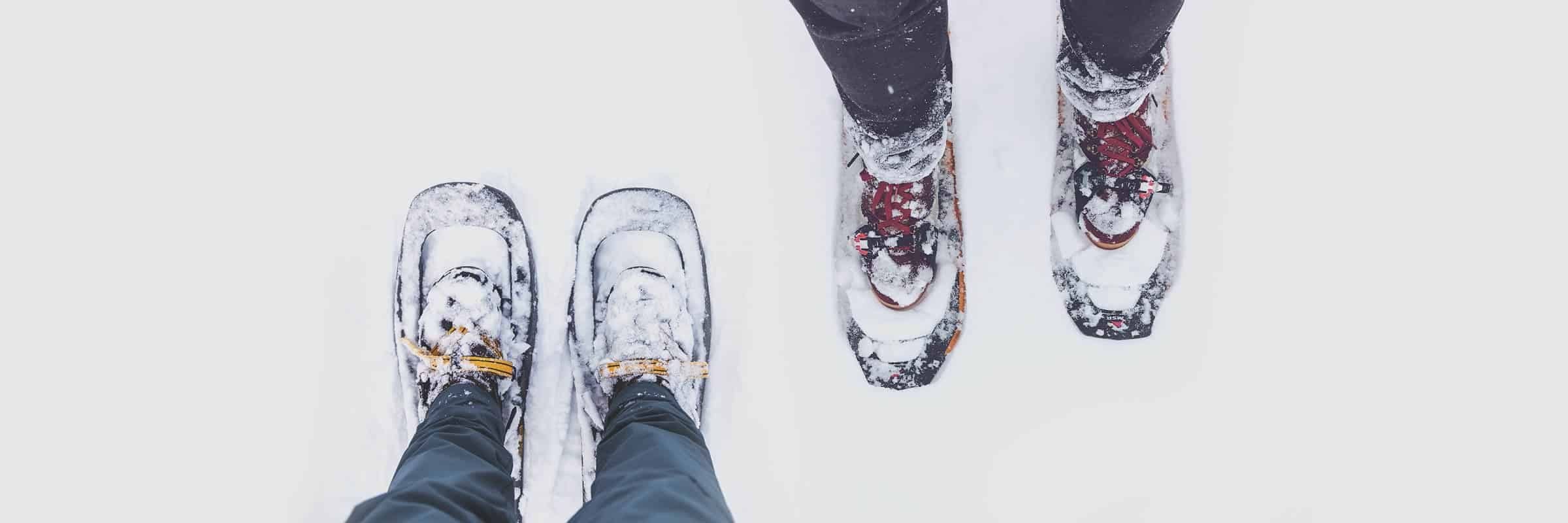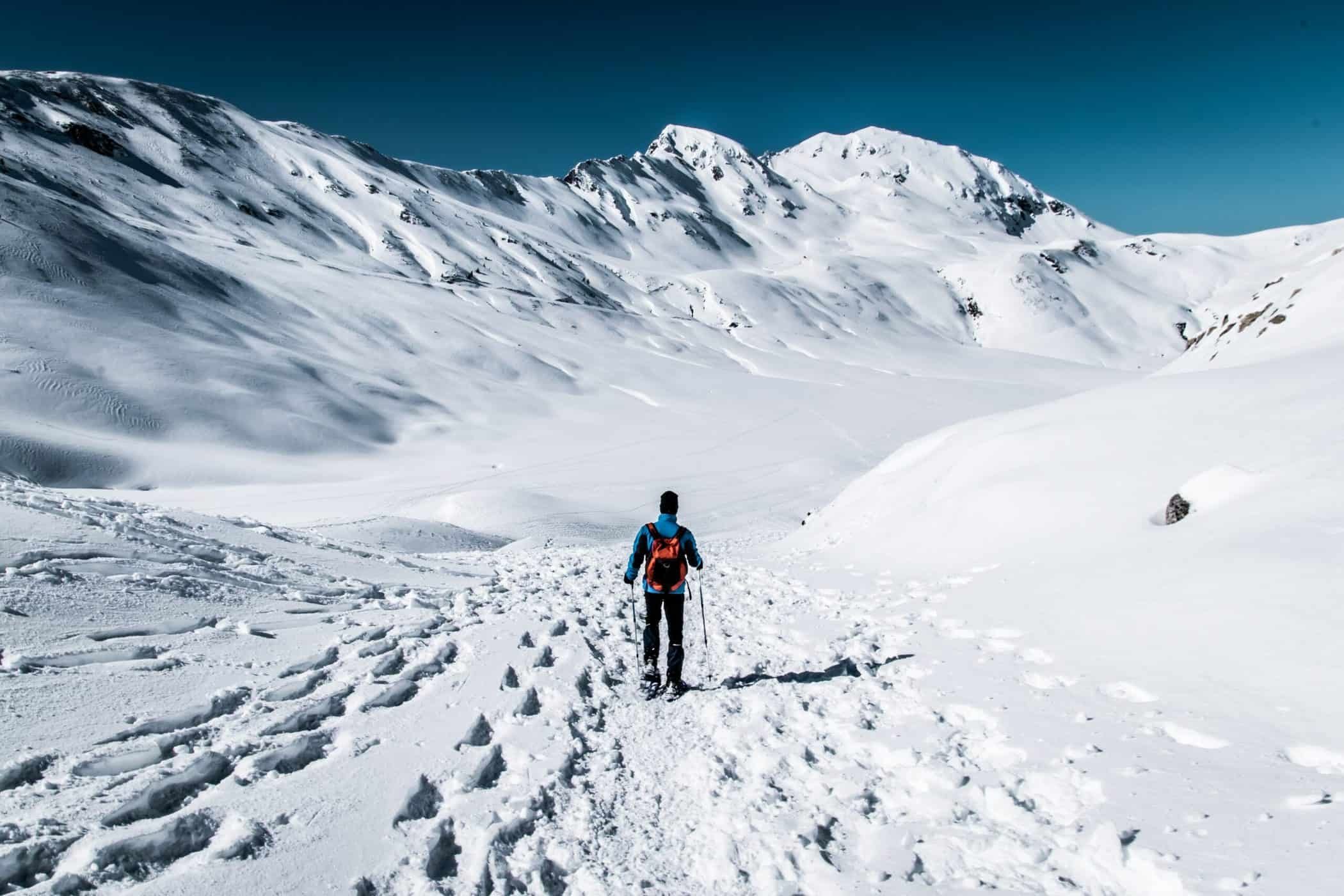Cold weather running isn’t just for the pros. With the right pair of shoes, anyone can get a grip on winter running (see what we did there?). That’s why we’ve rounded up the very best winter running shoes. Read on to discover our personal favourites and essential accessories alongside tips for choosing the perfect pair to suit your needs!
Our choice for the best overall winter running shoes this year goes to the Saucony Peregrine Ice+ 3 Trail Running Shoes. The water-resistant construction remains highly breathable, while the outsole features lugs that grip ice, snow, and even mud when the weather starts to warm up.
1. Best Overall Winter Running Shoes
For those who don't let snow and ice slow down their outdoor adventures, the Saucony Peregrine Ice+ 3 Trail Running Shoes helps you push your limits in even the nastiest weather conditions.
Designed for the coldest and toughest seasons, the Peregrine Ice+ 3 shoes offer the best performance on slippery trails thanks to its PWRTRAC ICE outsole. Lightweight, flexible, and especially comfortable, it keeps you warm with its water and trail debris resistant upper. The 4mm slope makes it a good all-around shoe that's easy to adjust to.
Price: 0.00$
Brand Name | Product Type
- Lorem ipsum dolor<\/li>
- Lorem ipsum dolor<\/li>
- Lorem ipsum dolor<\/li><\/ul>","_id":"78a0184"},{"feature":"
- Lorem ipsum dolor<\/li>
- Lorem ipsum dolor<\/li>
- Lorem ipsum dolor<\/li><\/ul>","_id":"393aa00"}],"single_product_id":"","cta_1_url":{"url":"https:\/\/www.altitude-sports.com\/products\/saucony-peregrine-ice-3-running-shoes-womens-llll-scy-s10791","is_external":"on","nofollow":"","custom_attributes":""},"cta_2_url":{"url":"https:\/\/www.altitude-sports.com\/products\/saucony-peregrine-ice-3-running-shoes-mens-llll-scy-s20791","is_external":"on","nofollow":"","custom_attributes":""},"credit":null,"limit":null,"collection_link":null}
2. BEST RUNNING SHOES FOR SNOW
The Salomon XA Pro 3D V9 GORE TEX Trail Running Shoes are the perfect shoe for trail runners, and it performs just as well on the road. Just the thing after a snowfall, it features a waterproof GORE-TEX membrane and a Premium Wet Traction Contagrip outsole, which performs on wet snow and prevents water from seeping into the shoe. Maximum grip and performance make this one of our best shoes for winter running.
For a less winterized experience, check out the Salomon XA Pro 3D V9 Trail Running Shoes for men and women. These are the same great shoe, but without the impenetrable GORE TEX construction and with a slightly lower price tag.
Price: 0.00$
Brand Name | Product Type
- Lorem ipsum dolor<\/li>
- Lorem ipsum dolor<\/li>
- Lorem ipsum dolor<\/li><\/ul>","_id":"d2fd8d6"},{"feature":"
- Lorem ipsum dolor<\/li>
- Lorem ipsum dolor<\/li>
- Lorem ipsum dolor<\/li><\/ul>","_id":"e2ad7dc"}],"single_product_id":"","cta_1_url":{"url":"https:\/\/www.altitude-sports.com\/products\/salomon-xa-pro-3d-v9-gore-tex-trail-running-shoes-mens-llll-sal-l47270100","is_external":"on","nofollow":"","custom_attributes":""},"cta_2_url":{"url":"https:\/\/www.altitude-sports.com\/products\/salomon-xa-pro-3d-v9-gore-tex-trail-running-shoes-womens-llll-sal-l47119100","is_external":"on","nofollow":"","custom_attributes":""},"credit":null,"limit":null,"collection_link":null}
3. BEST RUNNING SHOES FOR ICY TRAILS
Lightweight and rugged, the Salomon Spikecross 6 GTX Shoes boast a Quicklace lace-up system with an aggressive lug pattern and rubber outsole. This combo provides excellent traction on icy surfaces.
Made with bluesign certified materials and GTX waterproof protection, this is truly the ultimate winter running shoe. And when it comes to durability, the price is well worth it for any seasoned runner.
Price: 0.00$
Brand Name | Product Type
- Lorem ipsum dolor<\/li>
- Lorem ipsum dolor<\/li>
- Lorem ipsum dolor<\/li><\/ul>","_id":"7b58ed7"},{"feature":"
- Lorem ipsum dolor<\/li>
- Lorem ipsum dolor<\/li>
- Lorem ipsum dolor<\/li><\/ul>","_id":"cf57f9d"}],"single_product_id":"","cta_1_url":{"url":"https:\/\/www.altitude-sports.com\/products\/salomon-spikecross-6-gtx-shoe-unisex-llll-sal-l47270700","is_external":"on","nofollow":"","custom_attributes":""},"cta_2_url":{"url":"","is_external":"on","nofollow":"","custom_attributes":""},"credit":null,"limit":null,"collection_link":null}
4. BEST RUNNING SHOES FOR ICY ROADS
Meet the world’s first winter running shoe made from Dyneema and G+ graphene. At its core, the Norda 001 G+ Graphene Shoes with Carbide Tipped Spikes are designed to maximise strength and weightlessness for foul weather performance.
To accomplish this, Norda set out on a two-year mission to combine the world’s toughest and lightest materials—Dyneema x Graphene. What’s more, the Vibram outsole features 20 carbide-tipped steel spikes to ensure the grippiest black ice experience.
Price: 0.00$
Brand Name | Product Type
- Lorem ipsum dolor<\/li>
- Lorem ipsum dolor<\/li>
- Lorem ipsum dolor<\/li><\/ul>","_id":"7b58ed7"},{"feature":"
- Lorem ipsum dolor<\/li>
- Lorem ipsum dolor<\/li>
- Lorem ipsum dolor<\/li><\/ul>","_id":"cf57f9d"}],"single_product_id":"","cta_1_url":{"url":"https:\/\/www.altitude-sports.com\/products\/norda-the-norda-001-g-graphene-shoes-with-carbide-tipped-spikes-mens-llll-nda-001gspkm","is_external":"on","nofollow":"","custom_attributes":""},"cta_2_url":{"url":"https:\/\/www.altitude-sports.com\/products\/norda-the-norda-001-g-graphene-shoes-with-carbide-tipped-spikes-womens-llll-nda-001gspkw","is_external":"on","nofollow":"","custom_attributes":""},"credit":null,"limit":null,"collection_link":null}
5. BEST WINTER RUNNING SHOES FOR TRAILS
No matter the weather, the HOKA Speedgoat 5 Mid GTX keeps you going on trails in challenging conditions, including snow. Lightweight and flexible, it sits higher on the ankle than traditional running shoes, so you can walk and run in snow or mud without resulting in soaked feet.
The Vibram Megagrip with Traction Lug outsole works through all winter conditions, while the GORE-TEX inner liner protects the foot from snow and water. Wide enough in the forefoot, it allows you to pair these with a thick merino wool sock, no problem.
Price: 0.00$
Brand Name | Product Type
- Lorem ipsum dolor<\/li>
- Lorem ipsum dolor<\/li>
- Lorem ipsum dolor<\/li><\/ul>","_id":"dd0aace"},{"feature":"
- Lorem ipsum dolor<\/li>
- Lorem ipsum dolor<\/li>
- Lorem ipsum dolor<\/li><\/ul>","_id":"c0148c4"}],"single_product_id":"","cta_1_url":{"url":"https:\/\/www.altitude-sports.com\/products\/hoka-speedgoat-5-mid-gtx-mens-llll-hoo-1127918","is_external":"on","nofollow":"","custom_attributes":""},"cta_2_url":{"url":"https:\/\/www.altitude-sports.com\/products\/hoka-speedgoat-5-mid-gtx-womens-llll-hoo-1127919","is_external":"on","nofollow":"","custom_attributes":""},"credit":null,"limit":null,"collection_link":null}
6. BEST WINTER RUNNING SHOES FOR AROUND TOWN
On snow-cleared city streets, nothing beats the ON Cloudrunner Waterproof Road Running Shoe. Designed with ON’s signature Zero-Gravity ultralight foam and a 360° breathable waterproof upper, this is a comfortable and dependable shoe for runners of all levels. Plus, they look pretty good in casual settings, too.
Price: 0.00$
Brand Name | Product Type
- Lorem ipsum dolor<\/li>
- Lorem ipsum dolor<\/li>
- Lorem ipsum dolor<\/li><\/ul>","_id":"dd0aace"},{"feature":"
- Lorem ipsum dolor<\/li>
- Lorem ipsum dolor<\/li>
- Lorem ipsum dolor<\/li><\/ul>","_id":"c0148c4"}],"single_product_id":"","cta_1_url":{"url":"https:\/\/www.altitude-sports.com\/products\/on-cloudrunner-waterproof-road-running-shoe-mens-llll-onr-52-m","is_external":"on","nofollow":"","custom_attributes":""},"cta_2_url":{"url":"https:\/\/www.altitude-sports.com\/products\/on-cloudrunner-waterproof-running-shoe-womens-llll-onr-52-w","is_external":"on","nofollow":"","custom_attributes":""},"credit":null,"limit":null,"collection_link":null}
7. Best Winter Running Shoes for Women
What does women-specific really mean? For us, it's a shoe that’s fully adapted to the morphology of your feet: a softer cuff, a cradling anatomical design, and a lower density ADV-C chassis for greater stability.
The Salomon X Ultra 4 GORE TEX Hiking Shoes are a shining example, with its combination of great traction, fit, and feel—all hallmarks of the French brand. Surprisingly comfortable and with an excellent grip in the snow, you might just tear through all seasons in this one shoe.
Also available in a women’s wide.
Price: 0.00$
Brand Name | Product Type
- Lorem ipsum dolor<\/li>
- Lorem ipsum dolor<\/li>
- Lorem ipsum dolor<\/li><\/ul>","_id":"4b8e17c"},{"feature":"
- Lorem ipsum dolor<\/li>
- Lorem ipsum dolor<\/li>
- Lorem ipsum dolor<\/li><\/ul>","_id":"98c9b1c"}],"single_product_id":"","cta_1_url":{"url":"https:\/\/www.altitude-sports.com\/products\/salomon-x-ultra-4-gore-tex-shoes-womens-llll-sal-l41289600","is_external":"on","nofollow":"","custom_attributes":""},"cta_2_url":{"url":"","is_external":"on","nofollow":"","custom_attributes":""},"credit":null,"limit":null,"collection_link":null}
8. BEST WINTER RUNNING SHOES FOR MEN
For all the male runners out there looking for a soft, supportive, and weather-resistant running shoe, we’ve got something for you: Introducing the NNormal Tomir Waterproof Shoe—and yes, that’s NNormal with two Ns.
Waterproof and breathable, the Tomir shoes let you run without building up excess heat inside your shoe. Very flexible and excellent in speed transitions, they’re also effective in preventing overpronation and absorbing shock for a truly smooth ride.
Price: 0.00$
Brand Name | Product Type
- Lorem ipsum dolor<\/li>
- Lorem ipsum dolor<\/li>
- Lorem ipsum dolor<\/li><\/ul>","_id":"56af855"},{"feature":"
- Lorem ipsum dolor<\/li>
- Lorem ipsum dolor<\/li>
- Lorem ipsum dolor<\/li><\/ul>","_id":"f00f7e6"}],"single_product_id":"","cta_1_url":{"url":"https:\/\/www.altitude-sports.com\/products\/asics-gt-1000-11-gtx-running-shoes-mens-llll-acs-1011b447","is_external":"on","nofollow":"","custom_attributes":""},"cta_2_url":{"url":"","is_external":"on","nofollow":"","custom_attributes":""},"credit":null,"limit":null,"collection_link":null}
BEST ADD-ONS
Product Name
For snowy days, and unstoppable winter runners, gaiters are a great low-budget addition to your running gear box. Keep snow out of your running shoes once and for all!
Product Name
Whether you’re a morning lark jogger, night owl runner, or bad weather sprinter—this is a bright, lightweight, and dependable choice for winter runs bereft of sunlight.
Product Name
Ultralight spikes that adjust to your size securely, these offer excellent stability on snow, ice, and rock. Try them on a walk or run in icy conditions. Plus, they fit in your pocket!
Product Name
For snowy days, and unstoppable winter runners, gaiters are a great low-budget addition to your running gear box. Keep snow out of your running shoes once and for all!
Product Name
Whether you’re a morning lark jogger, night owl runner, or bad weather sprinter—this is a bright, lightweight, and dependable choice for winter runs bereft of sunlight.
Product Name
Ultralight spikes that adjust to your size securely, these offer excellent stability on snow, ice, and rock. Try them on a walk or run in icy conditions. Plus, they fit in your pocket!
For snowy days, and unstoppable winter runners, gaiters are a great low-budget addition to your running gear box. Keep snow out of your running shoes once and for all!<\/p>","_id":"379e255","product_id":""},{"product_link":"https:\/\/www.altitude-sports.com\/products\/black-diamond-deploy-325-run-light-headlamp-unisex-llll-bdd-bd620693","product_feature":"
Whether you\u2019re a morning lark jogger, night owl runner, or bad weather sprinter\u2014this <\/span>is a bright, lightweight, and dependable choice for winter runs bereft of sunlight.<\/span><\/p>","_id":"691e852","product_id":""},{"product_link":"https:\/\/www.altitude-sports.com\/products\/black-diamond-blitz-spike-traction-device-llll-bdd-bd140005","product_feature":" Ultralight spikes that adjust to your size securely, these offer excellent stability on snow, ice, and rock. Try them on a walk or run in icy conditions. Plus, they fit in your pocket!<\/span><\/p>","_id":"2ee8ab9","product_id":""}],"single_product_link":null,"cta_1_text":null,"cta_2_text":null,"pros":null,"cons":null,"collection":null,"single_product_id":null,"cta_1_url":null,"cta_2_url":null,"credit":null,"limit":null,"collection_link":null}
Buying Guide
How to Choose Your Running Shoes
Finding the right winter running shoes or winter trail running shoes is crucial. Adequate traction is necessary so you don’t end up slipping all over the place. Look for lug soles (soles with indentations) that dig into snow and offer a good grip in various conditions. Vibram soles also offer excellent traction on mixed surfaces.
A shoe with a waterproof membrane like GORE-TEX (also indicated as GTX) will keep your feet dry if you’re running through slushy puddles or ankle-deep snow.
You can get the low-down on how to dress for winter running right here on the blog. We help you drill down into the details with our choice of the best running pants and tights for winter running and our favourite winter running jackets.
What to look for when buying winter running shoes
For optimal safety and comfort, pay attention to these key features when choosing a winter running shoe.
1. Consider the Terrain
Even in winter, there are some major differences between urban and trail running. Despite the slipperiness of both, trails have the added difficulty of being uneven. That’s why it’s crucial to determine the style of running you’ll be doing this winter before buying a shoe. Below, we talk about the main factors to consider when evaluating any model.
2. Waterproof Uppers
Whenever you say “I like the look of that shoe,” you’re talking about its upper. It’s the part of the shoe that encases your foot, but excludes the sole. In cold weather, a running shoe’s upper needs to be both breathable and waterproof. The former prevents the build up of condensation from within, while the latter prevents water penetration from without.
Many waterproof uppers are constructed using GORE-TEX (GTX) or something similar. GORE-TEX offers excellent waterproofing in addition to being breathable.
We really don’t recommend purchasing a winter running shoe that isn’t waterproof, no matter how much money you think you’ve saved. After a few runs, you’ll be ready to fork over another few bills for one that is. A non-waterproof shoe increases your risk of experiencing numb feet, blisters, and even frostbite. All that can certainly put a damper – and a cold one at that – on your winter running experience.
3. Proper Traction
Aggressive lugs are the rule, not the exception, when it comes to winter running shoes. Technologies like Contagrip and Vibram set the bar high among competitors. Here we take a closer look at both.
Contagrip
Salomon’s Contragrip technology has become an industry standard for high-traction, durable outsoles in any weather conditions. The company has applied a thorough understanding of density, materials, and geometry to engineer an unbeatable sole. You’ll find it on all their winter running shoe models, including our pick for best overall winter running shoe, the Speedcross 5 GTX.
Vibram
Since 1937, Vibram has been making high-quality soles that are renowned for both their comfort and durability. Many brands have incorporated Vibram soles into their products, including the likes of New Balance, La Sportiva, Timberland, and more. Vibram was also the first to bring the Five-Finger Shoe to market in 2005.
For winter running, companies like Saucony use Vibram’s Arctic Soles on their Peregrine Ice+, our personal favourite for best running shoes on icy surfaces. Arc’teryx also uses Vibram soles for their Norvan SL GTX, which we voted best minimalist winter running shoe in 2021.
4. Lacing
The two main lacing systems you’ll encounter are traditional laces and Salomon’s patented Quicklace. Quicklace is a system designed to never come undone. It’s made with thin elastic laces that have a high tensile strength. A small plastic tab near the tongue allows you to quickly tighten the shoe before a run and effortlessly loosen it after.
5. Gaiters & Ankle Protection
Gaiters can be purchased as after-market devices to optimize your winter running experience. They’re waterproof garments that protect your feet and legs from incoming water and debris. Simply hook the clip under the heel of your shoe and tighten the velcro along the leg.
Gaiters come in a variety of sizes, from ones that sit just above the heel to ones that rise to just below the knee. They’re an excellent investment for any sort of winter running terrain but are especially useful for trail running.
6. Other Features
If you can’t quite afford a pair of winter running shoes just yet, consider purchasing a pair of NANOspikes and hooking them on to your current runners. These spikes are made from tungsten carbide, which is both lightweight and durable. They perform best in mixed conditions of snow, ice, and pavement.

FAQs for winter running shoes
Q: Can you wear regular running shoes in winter?
A: Wearing regular running shoes in winter will not only slow you down, it will increase the risk of injury. The soles on standard running shoes are simply not made to handle slippery surfaces like ice and snow.
A proper winter running shoe has a studded sole. This helps keep each step stable and aligned below your hips. Without a gripping sole, you’ll be placing extra strain on your joints and ligaments, especially the lateral ankle ligaments.
If you haven’t already purchased a pair of winter running shoes, best advice is to wait until you do. Otherwise you risk ruining your entire running season with—quite literally—a single misstep.
Q: Are trail running shoes good for winter?
A: Trail running shoes are more rigid and feature more aggressive treading than regular running shoes. That said, they’re still a far cry from an ideal winter running shoe. For lightly snowed paths, a trail running shoe may suffice. But they’re made for soft and slippery surfaces (like mud), as opposed to dense, slippery surfaces (like ice).
Q: Are waterproof running shoes necessary?
A: Waterproof running shoes are an absolute must. They’ll protect your feet from freezing cold puddles and icy precipitation. Keeping your feet dry allows your socks to insulate as efficiently as possible. Like your fingers, ears, and nose, your toes are an extremity. This means they’re always at the frontlines of frostbite. Take all the precautions you can to ensure they stay dry and toasty or you can say au revoir to winter running.
FINAL WORDS
Remember to pair your winter running shoes with the right socks. A wool sock is a great choice, as it will continue to insulate when wet. If your feet tend to stay cold, try layering a sock liner under your wool sock for added warmth. Just make sure your feet aren’t too snug inside your shoe. If they are, you’ll actually decrease thermal capacity by restricting airflow.
We hope our guide has answered any questions you had about winter running shoes. Now the only thing left to do is pick up a pair of your own and hit the snow…running. See y’all on the trail!


